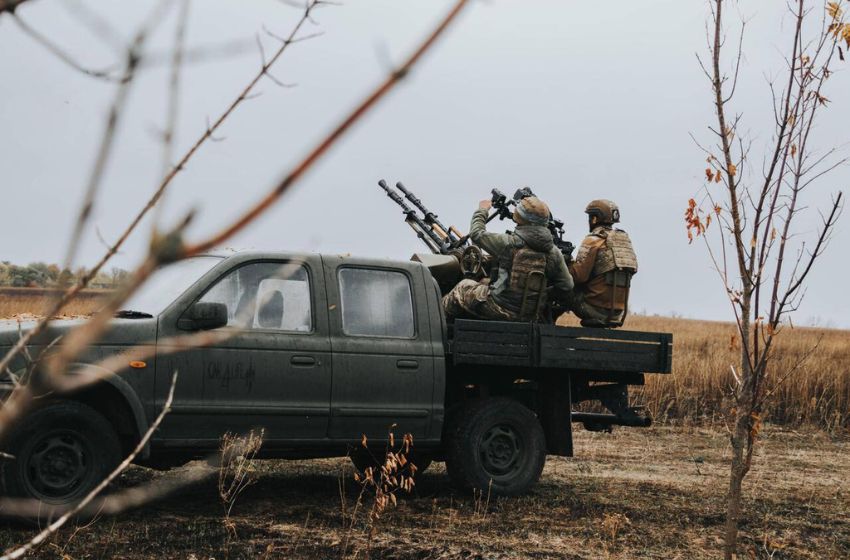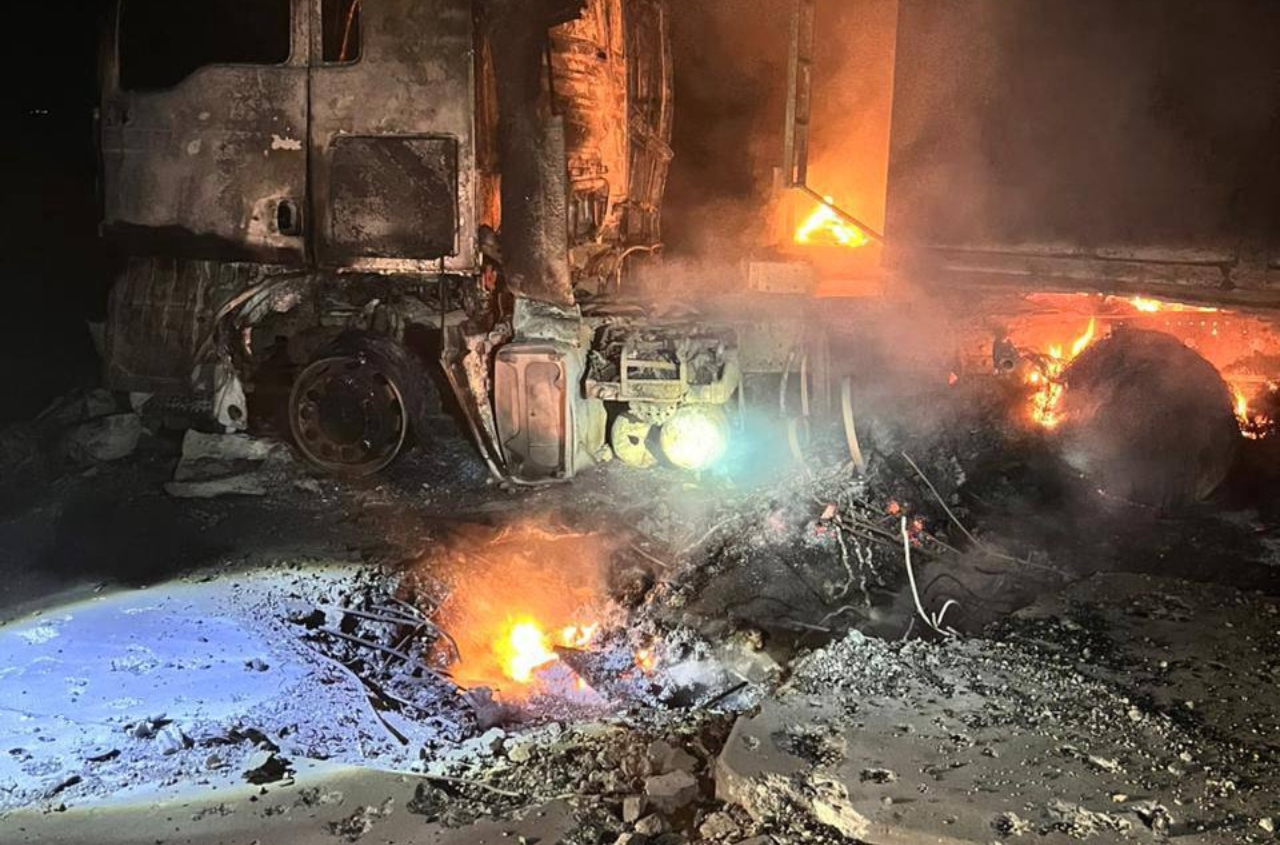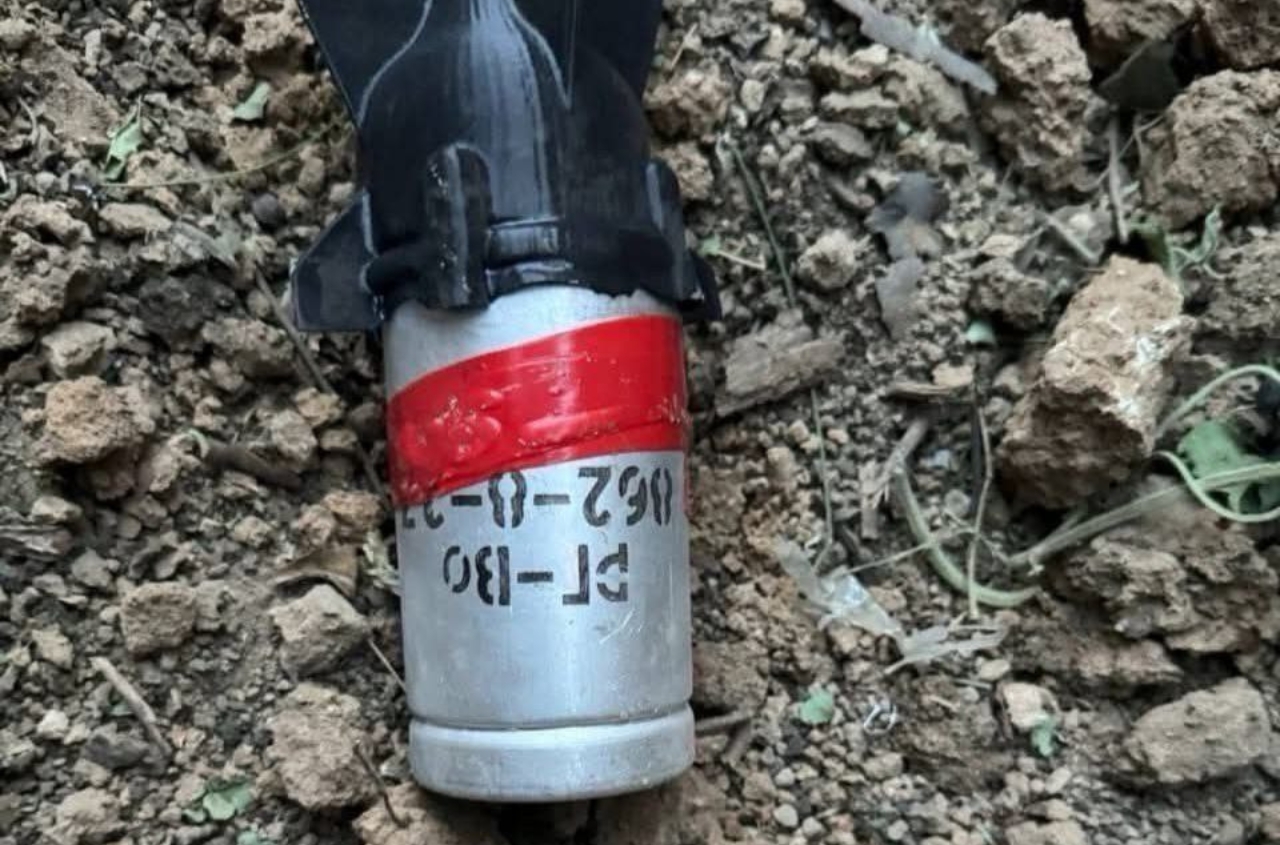Overview
Today marks the first in a series of "on performances (footholds)"... we'll begin with the most "problematic" area - the Kurakhiv direction...
We will structure the analysis as follows:
- Composition and structure of enemy groupings deployed and operating in this area
- Current situation...
- Immediate prospects and possible directions for further development...
- Currently, in the Kurakhiv direction (which I would also call the Kurakhiv-Uspeniv direction), there are troops (forces) from three enemy military groupings operating: "Center" (partially - left flank of the 2nd General Army, part of the 51st General Army + the 90th Tank Division), "South" (its southern part, namely - the 8th General Army, almost in full strength + attached units), and "East" (36th, 29th General Army, 68th Army Corps + 40th Separate Marine Brigade).
The distribution of these forces is as follows:
- From Yasna Polyana (Shakhtarske) to Katerynivka, forces and assets from the "East" grouping are operating (36th, 29th General Army, 40th Marine Brigade, 68th Army Corps).
- Along the Marinka - Kurakhove direction and on both flanks of this axis, up to the Vovcha River, the "South" grouping's troops (8th General Army) are active.
- To the north, up to Novoselidivka, the "Center" grouping's armies (2nd, 51st General Army) and the 90th Tank Division are operating.
As of the end of October, the enemy had the following forces in these formations: a) In the Kurakhiv direction (groupings "Center" and "South"):
- Personnel: between 29,500 and 30,000 troops
- Tanks: 235-237 units
- Armored fighting vehicles (AFVs) of all types, including armored cars and MT-LB-type tractors: 510-512 units
- Artillery systems (AS) of towed artillery, starting from 100 mm caliber up to 120 mm mortars: 460-462 units
- Multiple launch rocket systems (MLRS): just under 100 units (approximately 90-92)
- In the interests of these two groupings, a combined tactical group of missile troops is operating directly in the Kurakhiv direction, armed with 4-6 launchers of operational-tactical missile systems.
- Daily, in support of these groupings, the enemy command employs an average of 6-8 "aircraft" from army and operational-tactical aviation.
b) In the Uspeniv direction (formerly the Vuhledar direction), including the Vremivka sector (flank towards Velyka Novosilka), the forces from the "East" grouping are operating:
- Personnel: 32,000-33,000 Russian soldiers
- Tanks: up to 255-260 units
- AFVs: less than 520 units (approximately 516-518)
- AS: around 400 "barrels" (perhaps slightly less...)
- MLRS: just over 110 units (112-113)
- Two tactical groups of missile troops - one with up to 4 launchers of operational-tactical missile systems, the other with 5-6.
- Aviation support, on average throughout the day, is provided by up to 8-10 "aircraft" from army and operational-tactical aviation.
It is important to mention the enemy's reserves (primarily, the so-called "first echelon operational reserve") concentrated in these directions across all three military groupings. I should note that I do not have any relatively fresh data for November, but as of the end of October (October 30-31), they consisted of the following:
-
In the Kurakhiv direction, the enemy had in reserve up to:
- One infantry regiment (IR) from the 51st General Army,
- One tank battalion (TB), likely from one of the motorized rifle divisions (MRD) of the 8th General Army,
- Three reserve battalions from the 51st General Army.
Together, these forces comprised slightly over 2,000 personnel, with 25-26 tanks, 30 armored fighting vehicles (AFVs), and up to 40 pieces of various caliber artillery.
-
In the Vremivka direction (or Uspeniv direction), the enemy command (East grouping) had the following forces in reserve:
- Up to three motorized rifle regiments (MRR), although only one is fully operational—the 902nd special designation regiment from the 116th Separate Special Purpose Brigade, which has a structure and composition corresponding to "motorized rifle." The other two are more likely "infantry" or "reserve" units.
Additionally, the East grouping's command has the following for increasing efforts:
- Up to five battalions, three of which are "motorized rifle reserves," while the other two are "standard" from one of the motorized rifle brigades (MRB) of the 36th General Army (likely the 37th MRB). This totals up to 7,000 personnel, with fewer than 10-12 tanks, around 110 AFVs, and 35-36 pieces of artillery. There are no MLRS units, as everything has been pulled to the front.
Thus, at present, the enemy is operating in the Kurakhiv and Vremivka directions with a total force of approximately 62,000-63,000 personnel (possibly slightly more, but definitely less than 65,000).
Their equipment includes:
- Fewer than 500 tanks,
- Just over 1,000 AFVs (approximately 1,010-1,012 units),
- Under 865 pieces of towed artillery and around 200 pieces of rocket artillery.
In my view, these are not very impressive figures, especially considering that forces and assets from three enemy military groupings are engaged in operations in these directions (albeit partially).
The current situation is quite clear. First and foremost, regarding the enemy's actions and the main outlines of their plan...
For those who are only occasionally interested in the "development of events," let me remind you of the main storyline:
-
The enemy, using the forces of the 90th Tank Division and part of the 27th Motorized Rifle Division from the 2nd General Army of the Central Group, with active participation from the brigades of the 51st General Army (5th, 110th, and 114th Separate Motorized Rifle Brigades), has broken through the Armed Forces of Ukraine (AFU) defenses in the tactical zone along the general directions of Ukrainka - Novoselidivka and Ukrainka - Vyshneve (via Tsukurine).
As a result, over the course of a week, they reached the line of Novodmytrivka - Novoselidivka, effectively forcing Ukrainian troops to completely withdraw from the area of Izmailove - Hirnyk - Kurakhivka - Ostrivske and retreat westward from the Vovcha River to avoid encirclement and defeat.
At present, the enemy is trying to exploit their success toward Berestky and Voznesenka, effectively pushing the AFU completely off the northern shore of the Kurakhiv Reservoir.
In turn, in the direction of Vyshneve, the enemy managed to encircle the city of Selidove from the south, facilitating the advance of their 2nd General Army on this city and its capture (with the participation of the 15th and 30th Separate Motorized Rifle Brigades and part of the forces from the 27th Motorized Rifle Division), thus securing their main offensive grouping (the 2nd and 41st General Armies) from the south, aimed at Pokrovsk and Myrnohrad.
- Additionally, directly along the direction of Marinka - Kurakhove (the southern shore of the Kurakhiv Reservoir), the enemy forces from the 8th General Army (150th Motorized Rifle Division) broke through the AFU defenses in the tactical zone and advanced up to 6-7 km, capturing the villages of Heorhiivka and Maksymilianivka, almost reaching the eastern outskirts of the village of Kurakhove.
However, this did not lead to significant progress for the units of another division of the 8th General Army—the 20th Motorized Rifle Division—in the direction of Pobeda - Dalne, as might have been expected. As far as I understand, the 255th Motorized Rifle Regiment, which was apparently supposed to advance in this direction, was redirected by the command of this division further south toward Kostiantynivka and Paraskoviivka to support the advance of the 33rd Motorized Rifle Regiment and the 10th Tank Battalion from the same division from the north.
Thus, in the operational area of the 8th General Army (Southern Group), the enemy has effectively reached the line of Maksymilianivka - Kostiantynivka, taking an encircling position relative to the AFU units defending west of the village of Pobeda.
- However, the enemy achieved the greatest success in the operational area of their Eastern Grouping. They evidently achieved operational surprise in their offensive actions west of Vuhledar...
Having crossed the Kashlahach River west of the village of Pavlivka and establishing a foothold there (with forces from the 29th General Army, particularly the 36th Separate Motorized Rifle Brigade, as well as part of the 36th General Army, including the 37th Separate Motorized Rifle Brigade), the enemy subsequently increased their efforts (by bringing in units of the 40th Separate Marine Brigade), effectively breaking through the AFU defenses across the full tactical depth along the directions of Zolota Nyva - Yasna Polyana, Prechystivka - Novoukrainka, and Pavlivka - Bohoyavlenka.
As a result, the enemy was able to reach the rear of the AFU grouping that was defending and holding the city of Vuhledar from the west. Considering that at that moment, the enemy's forward units, from their 39th separate motorized brigade and a combined divisional tactical group from the 18th Machine Gun-Artillery Division (gun) of the 68th Army Corps, managed to advance WEST OF the Vuhledar - Mariinka road and reach the line of Vodiane - Katerynivka, further defense and holding of Vuhledar was threatened with complete encirclement of Ukrainian forces in the city. Thus, they were forced to retreat in a northwestern direction, suffering significant losses in personnel and military equipment.
Subsequently, the enemy, increasing their efforts in the area of operations of the right flank of the Vostok Operations Command, acting with combined motorized rifle units, reinforced with tanks, successfully utilized the open terrain, which facilitated their rapid advance with superior forces and means, managed to swiftly (in just under a week) advance northward to a depth of 13-15 km, and at this moment, reached the line of Yasna Poliana - Maksymivka - Trudove - Katerynivka.
In this way, they not only formed the southern face (flank) of the entire Kurakhiv bulge but also created a sufficiently threatening situation from the south not only for the tactical group of the AFU defending Kurakhove but also for their rear areas. But more on that below...**
**3. Regarding the main sense of the enemy's actions on the Kurakhiv and Vremiivka directions... Everything I described above... I have been discussing since SPRING of this year, from the very moment when I considered HYPOTHETICAL directions and sections of the front where the enemy's command could plan and organize (and most likely will plan and organize) some more or less large-scale offensive actions.... If you remember, I even described in sufficient detail how it would be "in practice" - first the 8th Army Corps would "break" in the direction of Kurakhove, and then "Vostok" would strike from the south, bypassing Vuhledar. This is not due to any clairvoyance or intuition on my part... it is due to elementary knowledge of general military tactics, which begins to be taught from the 1st year at ANY military educational institution at the level of "military institute"...
After all, any military person will tell you that if your troops are defending IN A BULGE, sooner or later, the enemy will certainly strike at your flanks. Moreover, they will do it at the most convenient and opportune moment for themselves.
In military art, this is like 2+2=4... And yet, the strike west of Vuhledar and the enemy's "breakthrough" across the Kashlahach River northward turned out to be UNEXPECTED for the Ukrainian troops...
At this point, the enemy is evidently preparing for the final stage of its Kurakhove operation (essentially, the elimination of "the first of three bulges"). It is likely that the forces and means of the left flank of the Operational Command "Center," in conjunction with the 8th Army Corps of the Operational Command "South," will attempt not only to capture Kurakhove itself but also to break through to the area of Andriivka, along both banks of the Vovcha River. At the same time, the troops of the Operational Command "East," advancing from south to north, will likely attempt to break through to Rozliv and Konstantynopil.
Both groups need to cover about 10-11 kilometers. Unfortunately, under the current conditions, this does not seem "unrealistic" or fantastic. Moreover, if at the same time the enemy begins its long-prepared "breakthrough to Pokrovsk" with the forces of the 2nd and 41st Army Corps of the Operational Command "Center," the consequences could very well reach an operational scale, obviously not to our benefit...
Of course, this is "in theory," so to speak, regarding the general prospects. Because I hope that the Armed Forces of Ukraine (AFU) will not simply stand by as the enemy attempts to realize this "grand plan"...
Furthermore, I do not have detailed and thorough information regarding the nature and scale of the enemy's attacking and storming actions in specific sections and areas of the mentioned directions. This, in turn, would allow for a more complete and qualitative assessment of all these "prospects"...
By certain indicators, not everything is as "rosy" in the "Kremlin kingdom" as it seems from this "schematic" perspective... For example, for a month now, there has been a reduction in the overall number of the Russian strategic grouping operating on Ukrainian territory from 579,000 to 556,000, and those groupings operating in the Kurakhove and Vremiivka directions are clearly not exceptions in this regard. No one even whispers about the 690,000 plans once voiced by General Syrskii...
Moreover, it is evident that in the POSSIBLE (but clearly not mandatory) developments of the situation in the Kurakhove and Vremiivka directions that I described above, the enemy command will face certain difficulties...
-
The pace of the offensive by the forces and means of the Operational Command "Center" and the 8th Army Corps of the Operational Command "South" is clearly FALLING BEHIND the analogous indicators of the Operational Command "East." In this sense, the enemy will need to somehow "coordinate" the actions of both of its flanking groupings. And at the moment, this is not an easy task, as it may seem at first glance. The fact is that the nature of the terrain where the troops of the Operational Command "Center" and Operational Command "South" are advancing differs significantly from that where the forces and means of the Operational Command "East" are operating.
-
The situation for the enemy is further complicated by the fact that in front of the northern strike group, there is a sufficiently large defensive hub of the AFU in Kurakhove, protected from the north by a large reservoir. Essentially, to "capture" it, the enemy will have to act "head-on" from the east...
-
The expectation that the forward units of the Operational Command "East" will reach Kurakhove from the south and thus "assist" the units of the 51st and 8th Army Corps in "taking" it seems, for the time being, to be somewhat debatable... For this, the advancing brigades of the 29th, 36th Army Corps, and the 68th Army Corps will first have to take Daliine and break through through Uspenivka, acting exclusively from the south. This will be challenging for them... As practice shows, the resilience of the AFU defense increases when it begins to rely on natural barrier lines (in this case, the Sukhyi Yal River).
-
Essentially, the further fate of the defensive hub in Kurakhove will be decided south of it, specifically along the Sukhyi Yal River. If the AFU can hold the line of Zelenivka - Yantarnoye - Uspenivka - Illinka, then the Russian forces risk ending up "in a meat grinder" under Kurakhove with a high degree of probability...
To summarize...
In my opinion, of all "three bulges" (there are also the Siversky and Konstantynivka ones), at this moment, the Kurakhove bulge is the closest to "elimination." However, this does not necessarily mean that it will happen without a doubt...
In this sense, the next two weeks should provide "certain answers" regarding its further "prospects."




















